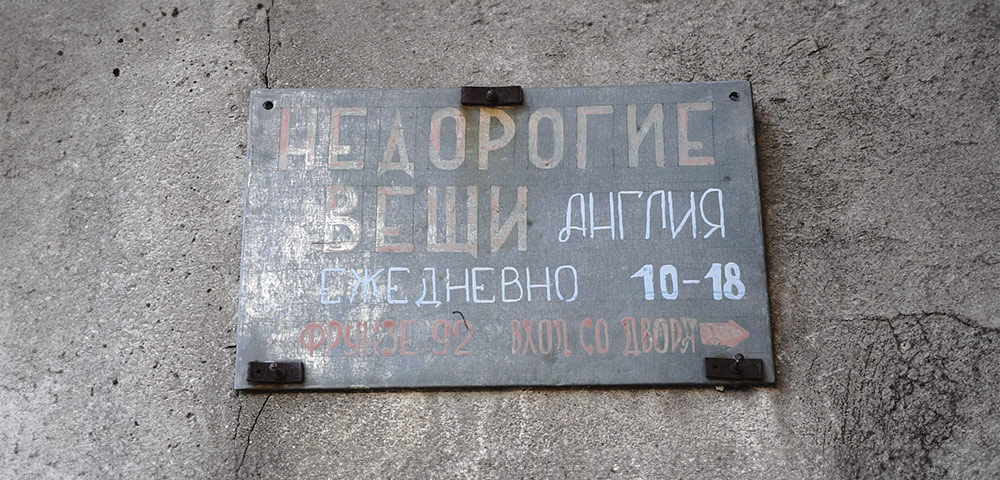Anton ********
Anton is an artist from Kaliningrad who lives and works in Paris, France. In his artistic practice, Anton explores the intersections of art, society, religion, politics, and sexuality. His interests lie in the realms of identity, self-worth, aesthetics, and absurdity. Utilising mediums such as photography, installation, educational environments, video, and performance, he delves into the complexities of these themes.

PLAQUE. KALININGRAD is a video about the historical German and Soviet legacy and the present time of Königsberg / Kaliningrad shown through street plaques. The movie stills are completely devoid of any other visual context (excluding the surfaces on which the plaques are located). On the one hand, such standardised plaques can be found in any other Russian city, but on the other, German toponymy and names outside the visual referent can cause slight perplexity.
"In my artwork I am trying to explore how a large number of individual narratives, gender, class, and ideological problems are revealed from a fairly formal work."
"In my artwork I am trying to explore how a large number of individual narratives, gender, class, and ideological problems are revealed from a fairly formal work."
PLAQUE. KALININGRAD
Agnes Miegel was a German author, journalist, and poet. She is best known for her poems and short stories about East Prussia, but also for the support she gave to the Nazi Party. She lived in Königsberg until just before it was captured in 1945, and wrote poems, short stories and journalistic reports. She also made a few journeys. During the Third Reich, she revealed herself as an ardent supporter of the regime. She signed the Gelöbnis treuester Gefolgschaft, the 1933 declaration in which 88 German authors vowed faithful allegiance to Adolf Hitler. In the same year, she joined the NS-Frauenschaft, the women's wing of the Nazi Party. In 1940 she joined the Nazi party itself. In August 1944, in the final stages of World War II, she was named by Adolf Hitler as an «outstanding national asset» in the special list of the most important German artists who were freed from all war obligations. In February 1945, she fled by ship from the approaching Red Army and reached Denmark. After Denmark's liberation on 5 May 1945, she stayed in the Oksbøl Refugee Camp until November 1946. In 1946, she returned to Germany, where she was under a publication ban until 1949. In that year, a denazification committee issued a declaration of no objection.
Despite not having lived in Russia for several years, at the core of his professional endeavours lies a deep engagement with the Kaliningrad Oblast, manifesting in various forms. He is driven by a desire to promote knowledge about the Baltic Sea region, its artistic landscape, and its iconic yet lesser-known cultural phenomena and figures. Through his work, he aims to shed light on the richness of this region and its significance within a broader socio-cultural context.

Context


After Königsberg became Kaliningrad, many inscriptions and plaques in the city spoke of his German past for many years. These plaques with the names of schools, shops, and advertising are all you can find in antique shops now. When I began to look at the city from this point, I came across the topic of the post-post-Soviet rethinking of the German heritage. For example, a significant event was the dismantling of Agnes Miguel's (1879–1964, a German poetess) memorial plaque (in fact, two memorial plaques) in Kaliningrad in November 2015. The memorial plaque was established in 1992 on the facade of the house, which was the last residence of the poetess in Königsberg; it was the initiative of the Kaliningrad regional branch of the Soviet (Russian) Сulture Fund and the German Society of Memory Agnes Miguel. The biography of the poetess is very controversial. In 1933 she signed the so-called «Oath of Fidelity to Hitler» along with 87 other German writers and further supported the Nazi leadership of the country. In 1939, she received an honorary badge from the Hitler Youth.

